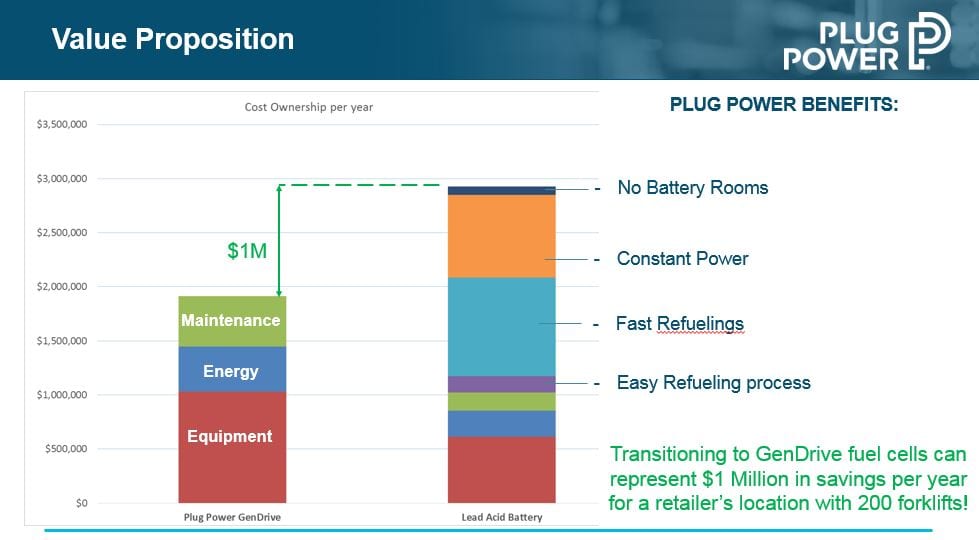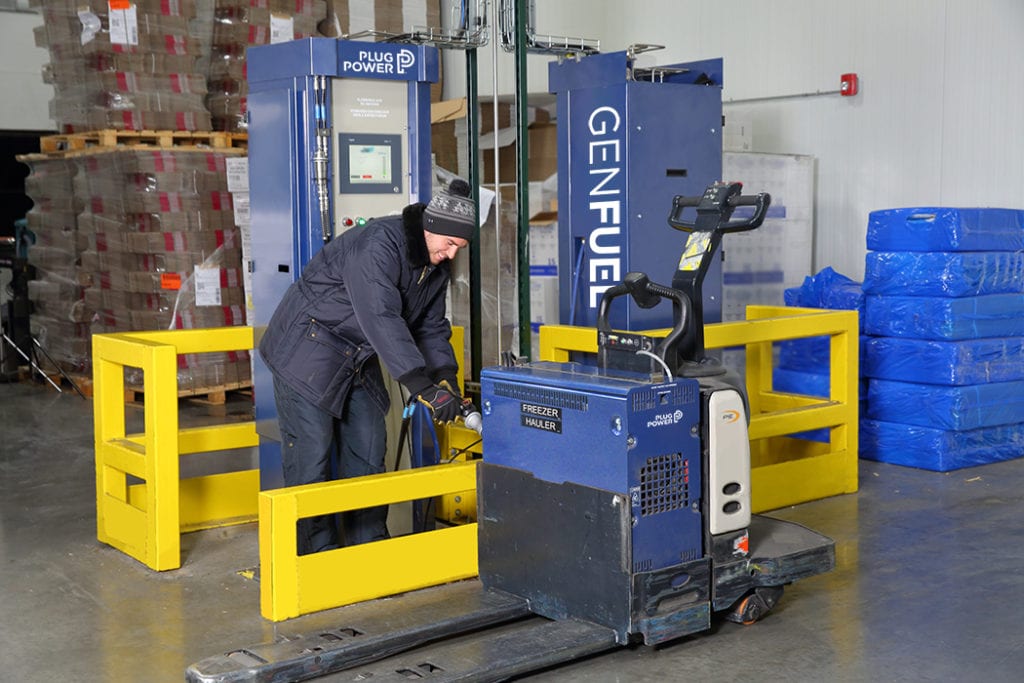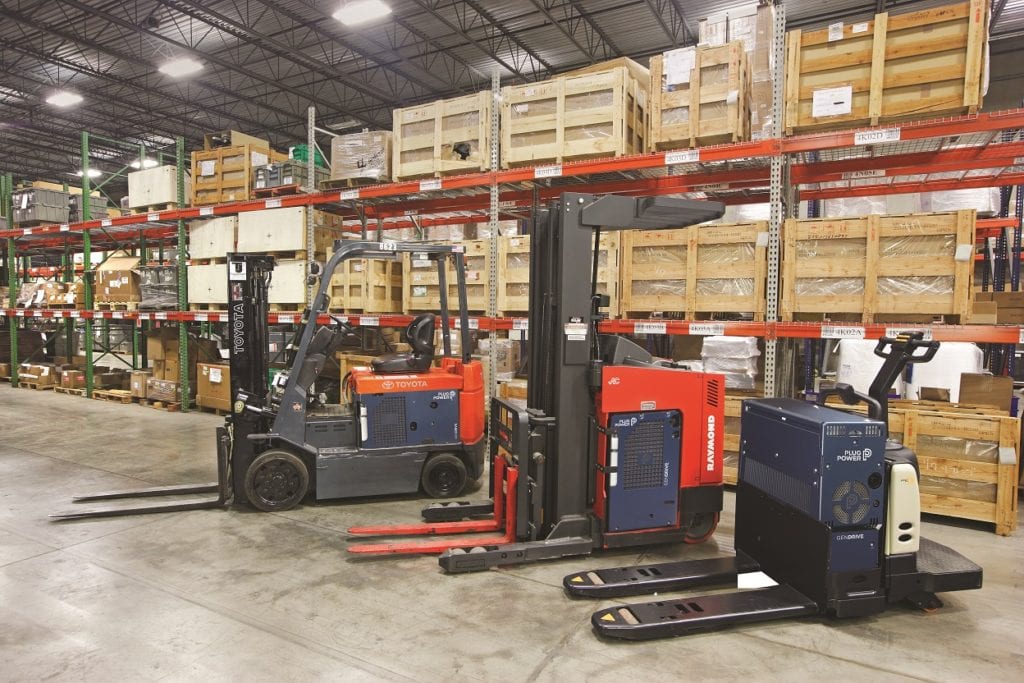FAQ from potential GenDrive customers
What is a fuel cell? Through an electrochemical reaction, fuel cells convert hydrogen fuel into power, with only heat and a small amount of water as byproducts. This video shows the simplicity of the reaction. Plug Power fuel cells are clean, made-in-America products being used today by leaders in a number of different markets, including food logistics, manufacturing and retail warehousing. Fuel cells enable these professionals to increase facility productivity while decreasing operational costs and making progress toward sustainability goals. Plug Power currently has more than 19,000 fuel cells in industrial material handling facilities. Our customers have completed more than 9.3 million hydrogen fuelings into their fuel cell electric vehicles.
If I decided to use fuel cells, would I need to get new material handling equipment? No. Plug Power’s GenDrive fuel cells are a drop-in replacement for the batteries already in use in all models of electric material handling equipment. Our customers continue to use their existing equipment until they are ready to upgrade it. One additional benefit is that fuel cells may allow a facility to “right size” its fleet by eliminating the recharge time needed by battery-powered forklifts, thereby keeping all equipment in service, or allowing a facility to choose not to replace a percentage of its older trucks.
Where is the hydrogen stored? There are two parts of the hydrogen station. (1) The dispensers where operators refuel their trucks are located near high traffic areas in the facility, enabling operators to quickly, in under 3 minutes, refuel and get back to work. (2) The storage facility is located outdoors, usually in a corner of the facility parking lot, where it is easy for a hydrogen truck to refuel it as needed. That hydrogen is then piped into the building and directly to the dispensers.
How do my operators refuel their fuel cell forklifts? An operator drives up to the hydrogen dispenser, stands on a pad and refuels the forklift, much like one refuels a car or truck. This video shows how quick and simple the process is.
How do fuel cells compare to batteries? Fuel cells offer a number of benefits over batteries in electric vehicles. (1) Fuel cells increase productivity and predictability while eliminating the need for charging infrastructure, battery rooms and high current wiring. (2) They eliminate battery droop entirely by providing 100% power for as long as they have fuel. (3) Hydrogen fueling dispensers are placed strategically within the facility to enable fueling stops approximately once per shift, taking as little as 60 seconds per stop as opposed to 20-30 minutes to change a battery at least once per shift. (4) The space that would have been used for a battery room can instead be used for revenue generating activities. (5) Peak demand utility costs from opportunity and fast charging are eliminated. (6) Worker safety is improved (no battery acid, electrical shocks or crushed fingers).
How will fuel cells save me money? Each facility runs a bit differently, so we walk through a value proposition customized for each business. The highlights are these:
- Fuel cells increase productivity in a facility by enabling drivers to make more picks per hour and per shift due to an elimination of battery droop in favor of 100% power throughout the workday
- Fuel cells increase productivity by vastly decreasing the amount of time drivers need to stop work to deal with power issues. What took 20-30 minutes to change a battery each shift now takes 2-3 minutes to fuel the fuel cell.
- Facility electricity bills decrease significantly because the facility is no longer charging large numbers of batteries.
- The space that was previously needed for the battery room is redeployed as productive revenue-generating facility space, increasing the number of pallets or parts that can be stored in the facility.

How do fuel cells help me meet my corporate sustainability goals? Fuel cells are clean, zero-emission power solutions. Unlike batteries, fuel cells have no acid, no hazardous emissions and no requirement for hazmat reporting.
What size facility do I need to operate in order for fuel cells to make sense? Facilities with as few as 50 pieces of material handling equipment should contact Plug Power to discuss how hydrogen and fuel cells can improve their business model.
#InfiniteDrive

